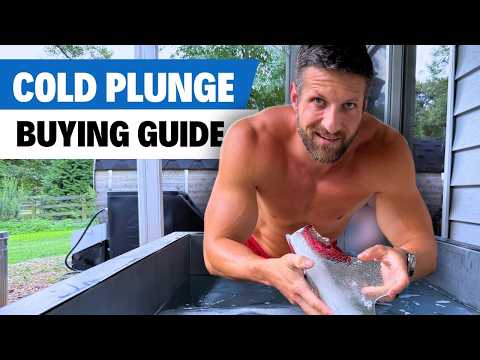When done correctly, cold plunging offers numerous health benefits, including improved stress resilience and boosted immunity. That’s why it has become so popular among biohackers and healthy living enthusiasts.
If you’re ready to get your feet wet (and cold), and are planning on building or investing in a cold plunge, here are the top things you should consider to ensure you’re getting the most benefits and joy out of your new tub:
- A water filtration system that utilizes ozone is best for keeping the water sanitary over extended periods (unless you’re OK with frequent water changes).
- A high-performance chiller can keep the water cold 24/7, reducing the need to add ice before every plunge.
- Without a chiller, a commercial ice maker or large silicone ice molds can provide the necessary ice to reduce the water temperature.
- Depending on your local climate, an insulated tub can keep the water cold for extended periods, even without a chiller.
- Chlorine and bromine-free water treatment options can further reduce the need for ongoing water changes.
- Tubs or specially designed barrels with built-in steps are easier to access than traditional rain barrels.
Before we discuss these and other factors in detail, I invite you to check out my article on the best cold plunge tubs, which highlights many of the cold plunges I have used over the past few years.
#1. Buy or Build
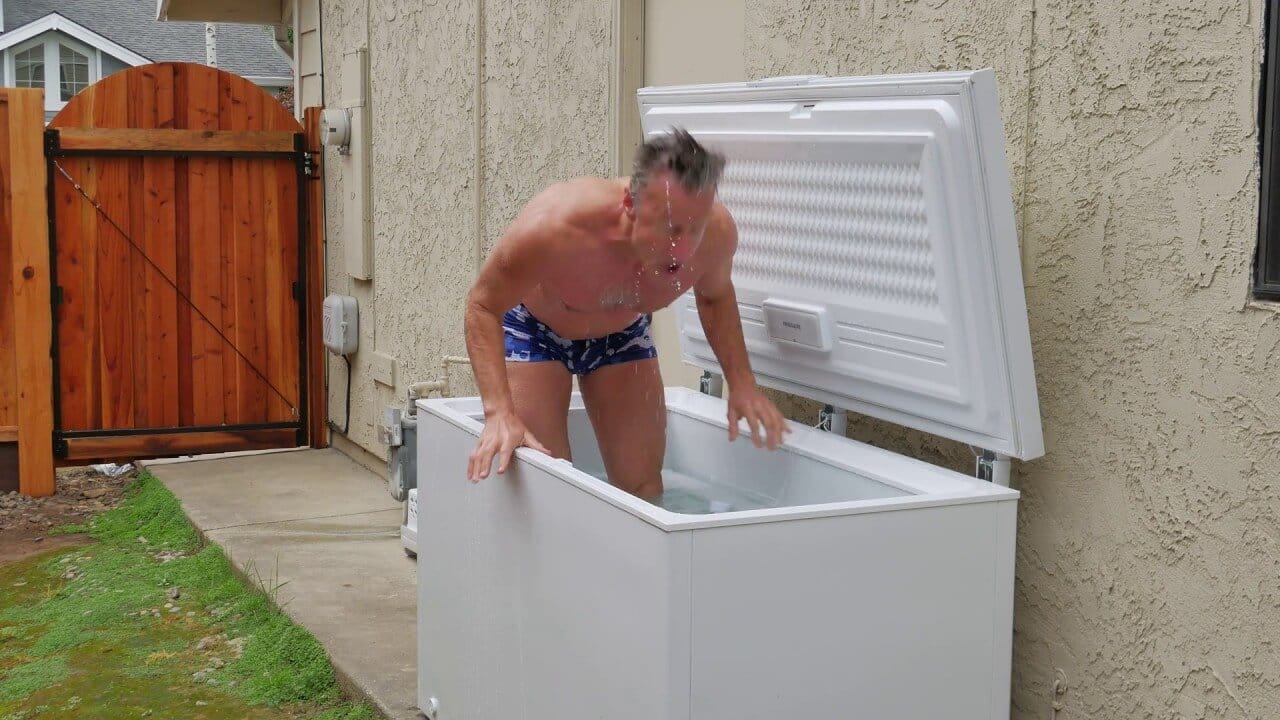
A DIY cold plunge is often the least expensive way to make ice bathing a regular part of your wellness routine. Some people repurpose an old trash can or rain barrel, while others convert an old chest freezer into a cold plunge tub.
But the downside to most DIY solutions is that it’s difficult to keep the water inside the plunge cold and sanitary. As a result, DIY plunges typically require frequent water changes, which increases the maintenance effort, lowers their usability, and drives up water costs.
Using a chest freezer and non-toxic water treatment products is a relatively inexpensive way to avoid weekly water changes and the need for adding ice before each plunge. The downside of the chest freezer approach is the electric shock hazard if you forget to unplug the unit before jumping in.
Budget permitting, the more convenient and less hazardous option is to purchase a cold plunge with a chiller that keeps the water sanitary and at the desired temperature. Of course, you can also buy a standalone chiller and hook it up to your DIY plunge, but doing so will diminish some cost benefits because the chiller is the most expensive part of most high-end plunges.
#2. Cost
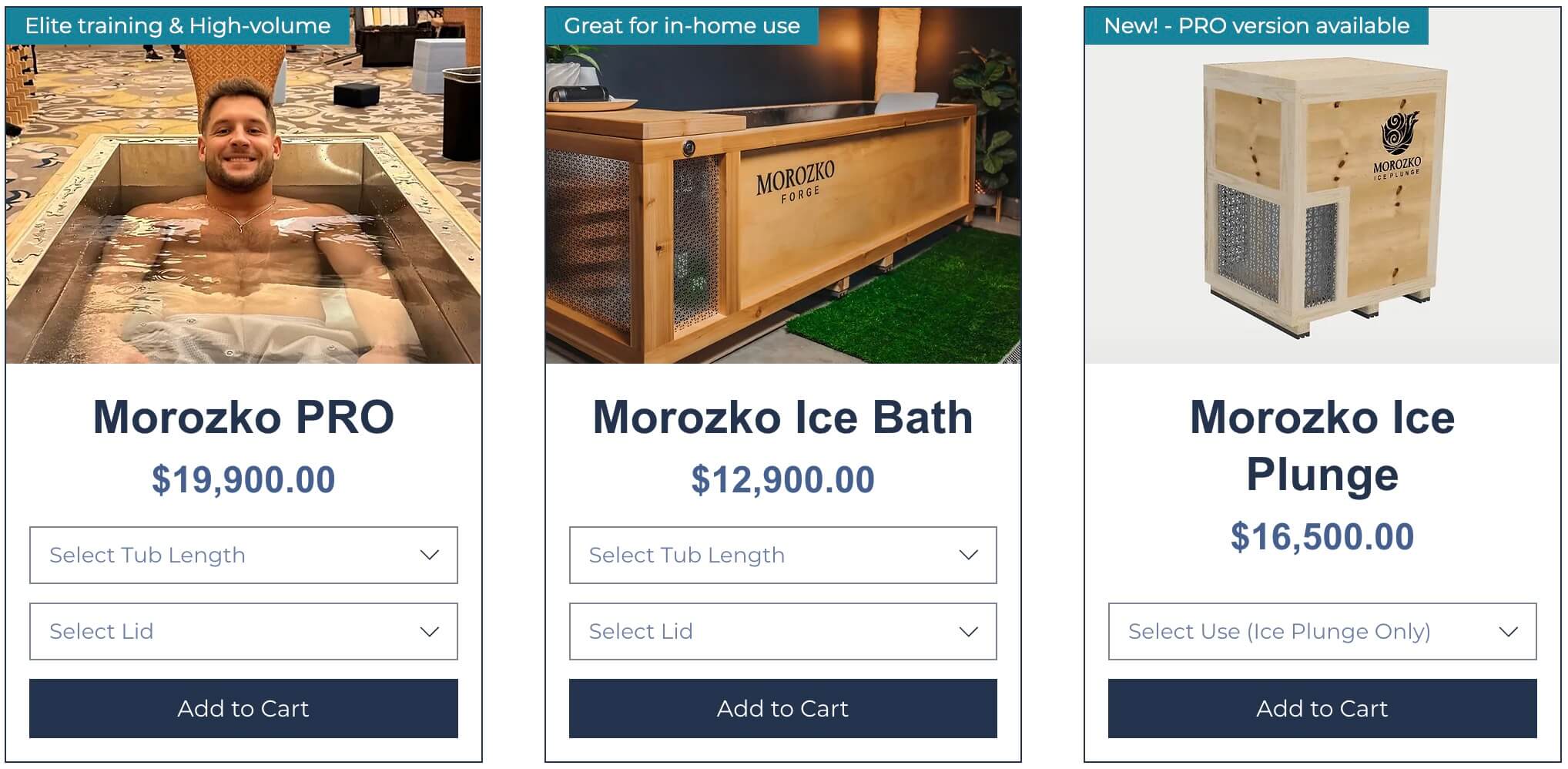
Depending on materials, size, filtration and cooling performance, a cold plunge can cost anywhere from $100 to over $10,000. The least-expensive plunge I own retails for $150 (the Ice Pod Pro), and the most expensive one in my backyard retails for almost $10,000 (the Sun Home Plunge Pro).
Ultimately, what you’re paying for comes down to two things: the quality of the materials and convenience.
Some of the least-expensive plunges I have tried are inflatable tubs (similar to kiddie pools, but taller) that don’t keep the water cold for more than a few minutes, and which offer no water filtration capabilities (although some can be hooked up to external chillers).
The higher-end plunges I own are made of high-quality materials (e.g., acrylic or aerospace rubber) and come with a chiller that keeps the water sanitary for several months, and at the desired temperature 24/7.
As a result, I don’t have to worry about frequent water changes or pouring ice into the tub before taking a plunge. That’s a convenience factor some people are willing to pay for. Others prefer spending less money (in some cases, significantly less) and accept the higher ongoing maintenance requirements.
Ultimately, you need to decide how much the extra convenience is worth.
#3. Temperature Control and Cooling Performance
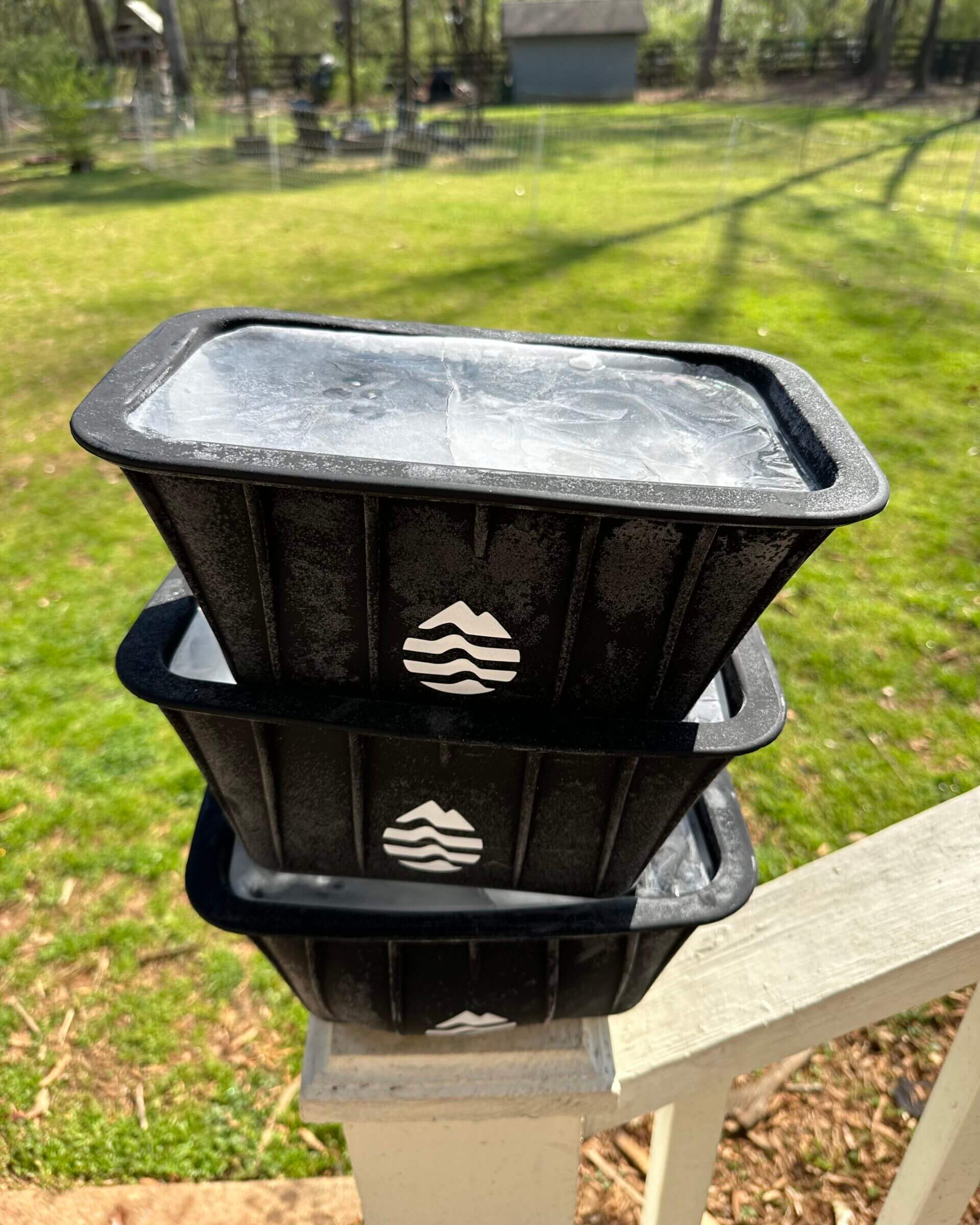
One of the most important aspects of a cold plunge is its ability to reach and maintain the desired water temperature.
Depending on where you live, keeping the water inside your tub at just above freezing might not be a problem during the year’s colder months. But here in Georgia, where I live, you need a high-performance chiller or lots of ice to keep the water cold most of the time.
So with the exception of situations where the ambient temperature is at or near freezing, you’ll need either a chiller, an ice maker, or block ice to reduce the water temperature inside your tub to effective levels.
A high-performance chiller is arguably the most convenient way to keep the water at the desired temperature. All the plunges I use regularly have a chiller that makes maintaining a consistent water temperature a breeze. A chiller also allows you to change the water temperature with the push of a button.
For example, my wife and I use different cold plunges at our house. Mine maintains a water temperature of 37° Fahrenheit, and hers is set to 55° Fahrenheit to accommodate our preferences and physiological differences.
If you don’t have a chiller, a commercial ice maker is another option many cold plungers utilize. Depending on the size of your tub and the ambient temperature, you’ll need approximately 100 to 120 pounds of ice to lower the water temperature to the low 30s.
Despite what you may have heard, most residential ice makers aren’t physically large enough to produce that much ice at once. In other words, they might be able to produce 100 pounds of ice per day, but that doesn’t help you if you need that amount right now. As a result, you’ll likely need to invest in a commercial ice maker with a large enough holding bucket to accommodate your daily plunges.
Another alternative to ice cubes is block ice. I have a number of silicone molds (see the photo above) that can each make seven pounds of block ice. All you have to do is fill them with water and place them in the freezer overnight. Since block ice is more effective than individual ice cubes (i.e., it doesn’t melt as quickly), you may only need three or four seven-pound blocks to chill the water to the desired temperature.
#4. Water Filtration
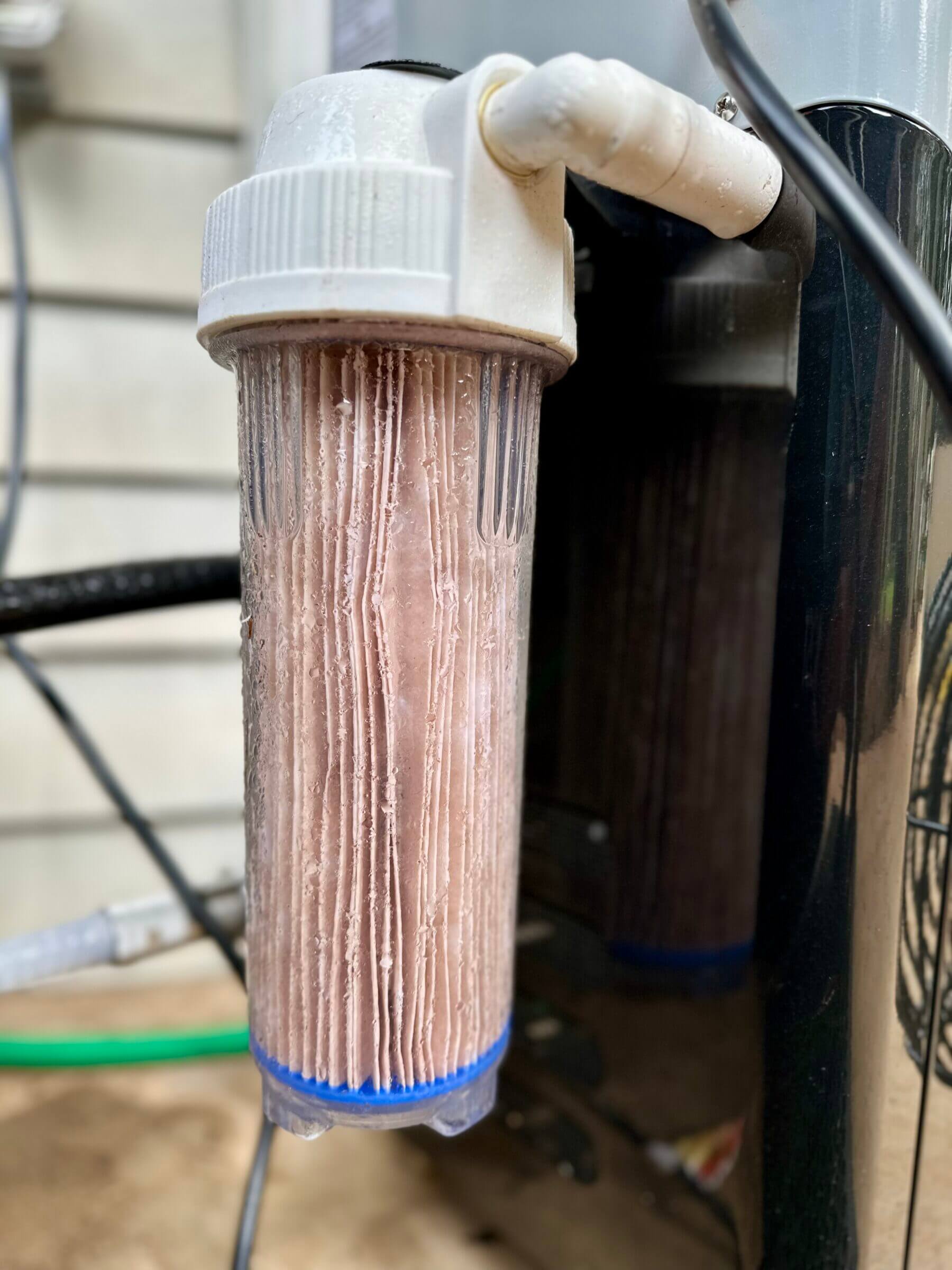
Water filtration will be a critical aspect of your plunging experience.
I have a lot on my plate and don’t want to deal with frequent water changes, which take time and cost money. Instead, I prefer a setup that requires minimal ongoing maintenance while keeping the water sanitary.
Many of the chillers on the market have built-in water filtration features that leverage a combination of a sediment filter and ozone to remove debris and kill pathogens that could make you sick. Some systems, including the first-generation Plunge I purchased several years ago, also had a UV lamp to kill organic compounds, including algae and bacteria.
The problem with UV lamps is their limited lifespan of approximately three years, after which they have to be replaced. That’s why Plunge no longer uses them in their newer tubs.
It’s also worth noting that you can use non-toxic water treatment products even if you don’t own a chiller. By doing so, you can probably get away with changing the water in your tub every two or three weeks instead of weekly.
But if you want to dramatically decrease the cadence of water changes, I recommend using a chiller in combination with non-toxic water treatment products. If you do, you can get away with changing the water every six months (or potentially even less frequently, if you don’t plunge daily).
When shopping for a cold plunge tub, I recommend getting one that either has a chiller (budget permitting) or one that has the appropriate connections for a chiller so you have the option to add one in the future.
For example, the new Ice Barrel 500 has the connections to hook up any third-party chiller. For testing purposes, I attached my TheraFrost chiller to the Ice Barrel, and the setup works perfectly. All I needed to do was purchase a brass hose adapter to connect the female end of the chiller hose to the female port on the Ice Barrel.
#5. Insulation
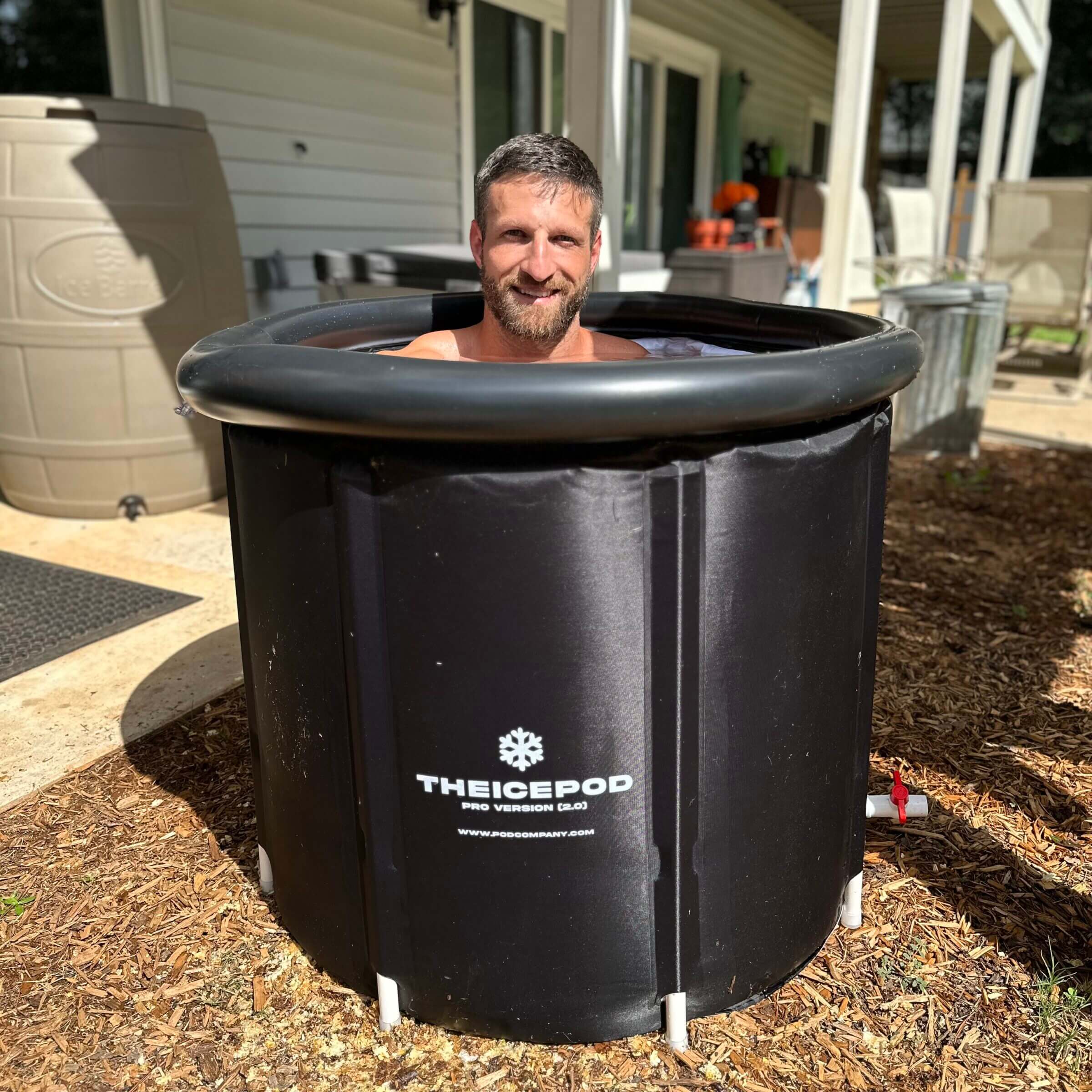
Fully insulated tubs keep the water cold for longer than tubs without insulation (e.g., single-wall tubs).
Whether you build or buy, I strongly recommend getting an insulated tub, especially if you don’t want to invest in a chiller. That way, you increase the chances of your water remaining at the desired temperature for several hours or even days, depending on the ambient temperature.
Plus, something many people don’t consider is the fact that during winter, an insulated tub will also reduce the chances of the water turning into ice (which can make it impossible to use your tub until the temperature increases).
Yet another advantage of an insulated tub is that it doesn’t produce condensation, which can be an issue if you plan on using the plunge inside, or in an area where constant moisture on the floor isn’t ideal.
(Obviously, you should expect some water on the floor as a result of getting in and out of the tub, but you can usually mop that up after you’re done. I’d argue that’s much less of an issue than condensation dripping onto the floor 24/7.)
#6. Size and Capacity

Cold water immersion is most effective when you submerge your entire body (up to your jawline). So, depending on your height and weight, make sure to pick a cold plunge with sufficient capacity to allow for whole-body immersion.
I’m six feet tall with fairly broad shoulders, and the first tub I purchased wasn’t big enough to accommodate my entire body (either my toes or knees stuck out of the water).
Having your toes or knees stick out of the water doesn’t alter the plunge’s effectiveness, but being unable to submerge your chest certainly would. Plus, it’s important that you’re as comfortable as possible while in the tub; if you feel cramped or forced into an uncomfortable position, you’ll be less likely to use it. (The only discomfort you should be battling is the discomfort from the freezing cold water.)
Barrel-style cold plunges are more forgiving because squatting lets you control how much of your upper body is submerged. Additionally, some people find squatting in ice-cold water more comfortable than lying flat on their backs. I suppose that’s because having your feet on the ground makes you feel more in control, while lying on your back makes you feel more vulnerable.
Regardless of what style of cold plunge tub you get, I recommend getting the largest tub you can afford for added convenience.
#7. Material and Durability

The concept of “you get what you pay for” certainly applies to cold plunge tubs.
As I mentioned earlier in this article, my least expensive cold plunge is made from the same cheap plastic as the inflatables our kids take to the pool in the summer. While they generally get the job done, you can’t expect a plunge like that to last for several years.
On the flip side, the cold plunge I’ve owned since February 2022 features an acrylic tub that will likely last for decades. The only things that might break at some point are the electronics inside the chiller.
Besides acrylic, other materials you can expect to last for a long time are stainless steel, aerospace-grade rubber and durable plastic (e.g., LLDPE). I own several plunges made from those materials and expect them to last, even when exposed to the elements.
At the same time, a tub made of rubber isn’t necessarily inferior to one made of plastic, because there are different types of rubber (and plastic) that are more durable than cheaper ones. For example, the aerospace-grade rubber used by Therasage and others is likely as durable as the LLDPE plastic used by Ice Barrel.
#8. Aesthetics
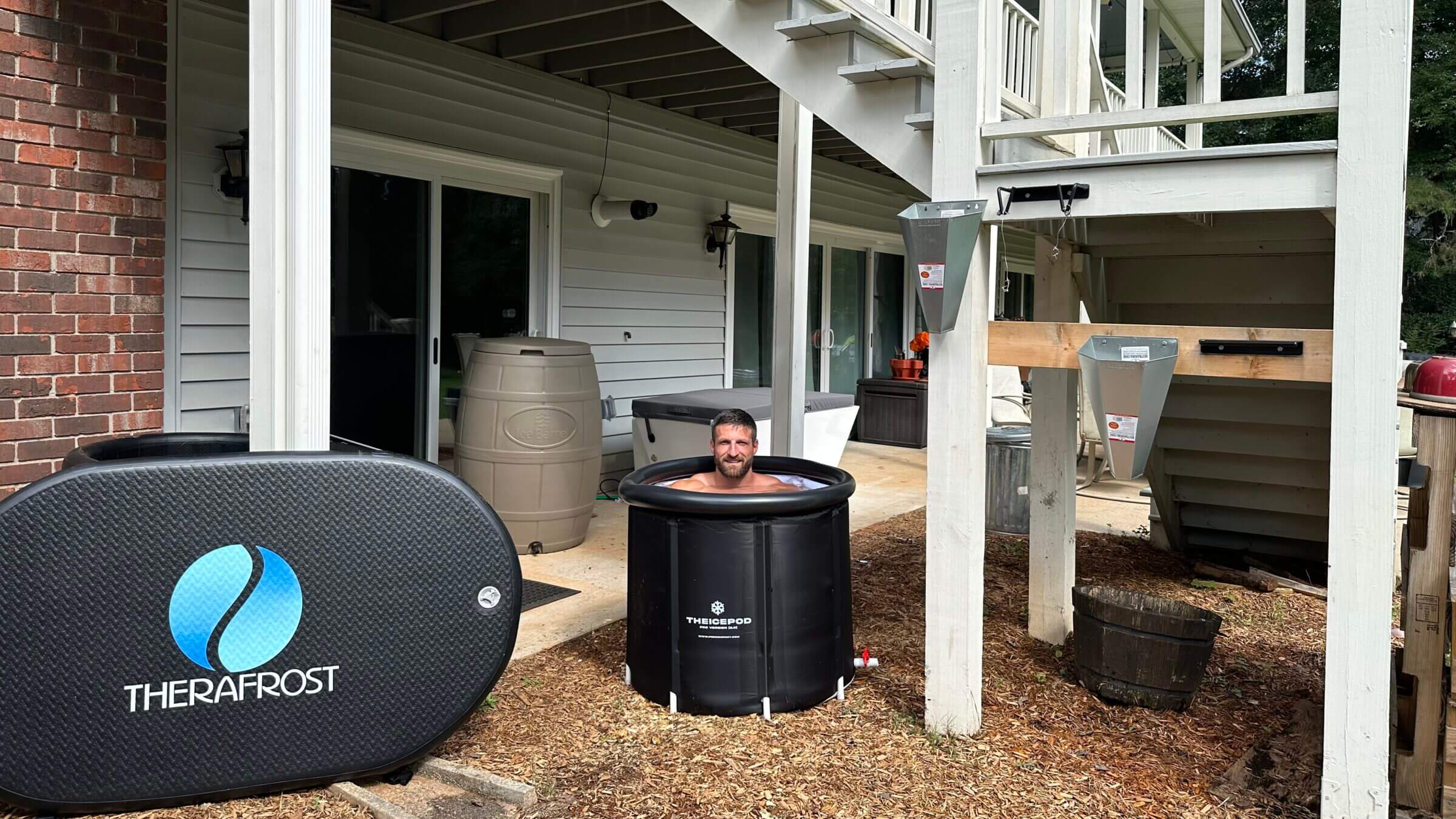
Whether you build or buy a cold plunge tub, you can choose from various designs, including traditional tubs, barrels, chest freezers and more. While I tend to focus more on function than form, I do see the benefits of picking a tub that looks good in your environment.
For example, your (non-plunging) partner might be more likely to agree to you getting a plunge and using up space in or around your home if it looks attractive and adds to, rather than detracts from, the overall look and feel of wherever you place it.
I don’t think my wife would have been thrilled if I had suggested converting an old chest freezer into a cold plunge and keeping it in our backyard. But she was more than OK with a sleek-looking acrylic tub.
The point is that I recommend picking a tub that fits into the landscape and isn’t an eyesore.
The good news is that you can find tubs made from various materials, including stainless steel, plastic, rubber or wood, as noted in the previous section.
#9. Portability
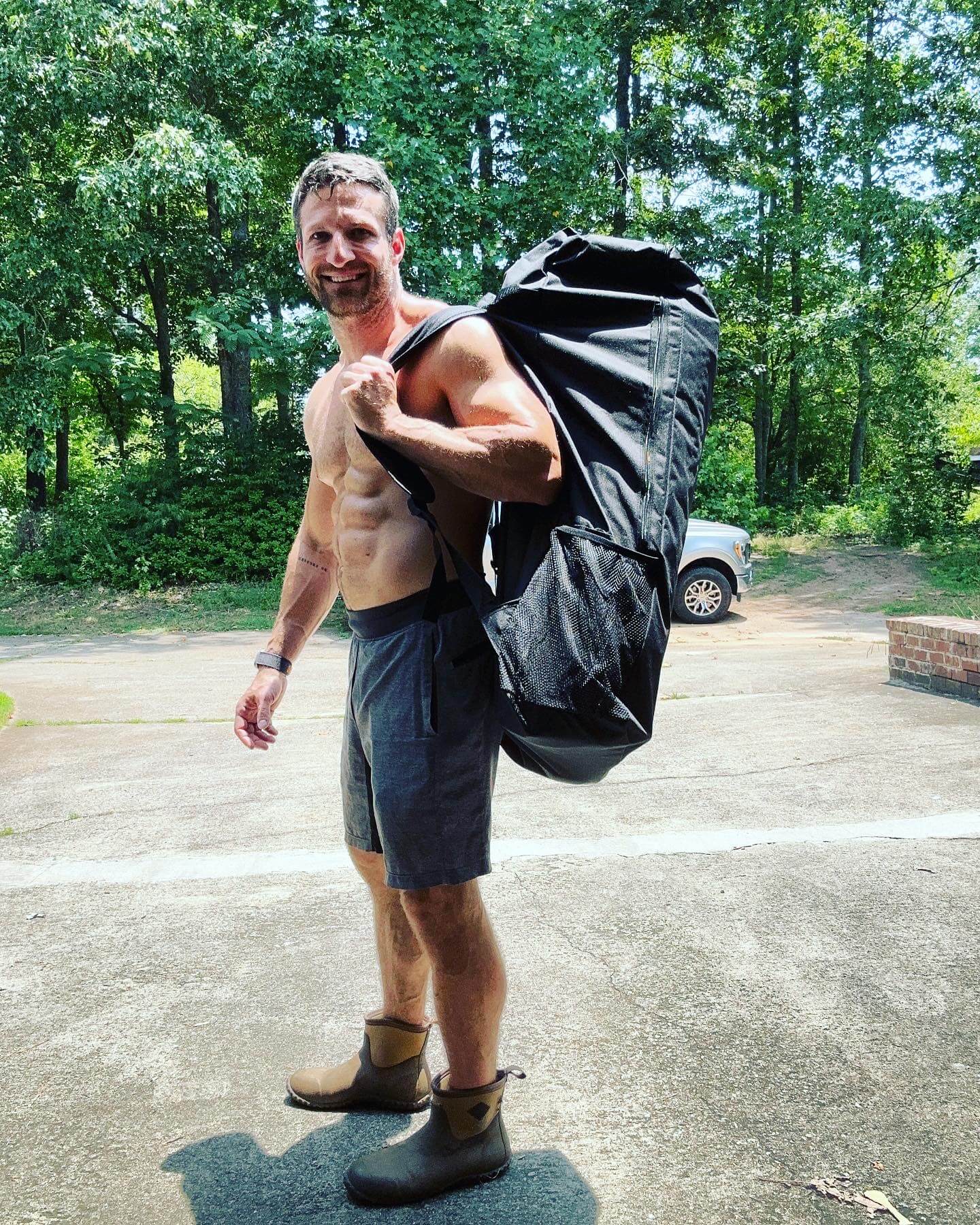
Portability wasn’t on my radar until I needed to move our cold plunge to another location in our backyard, and I realized I needed help because of its weight.
When I added the Ice Barrel and later the TheraFrost to our home spa and realized how easy they were to move (when empty), I began to appreciate the portability argument.
Here’s the thing: even if you have a dedicated spa area at your house like we do, a portable tub is advantageous, especially if there’s any possibility you might move. I’m already dreading the day we move to our new property, because I’ll have to figure out how to relocate our saunas and cold plunges.
An inflatable tub made from durable materials (like the TheraFrost or the Inergize) is easy to stow in a trunk or in the back of a pickup truck, so you could even take it with you on the road or on a camping trip. My acrylic Plunge tub looks much sleeker in our backyard than an inflatable rubber tub, but isn’t nearly as convenient to move.
#10. Brand Reputation and Warranty
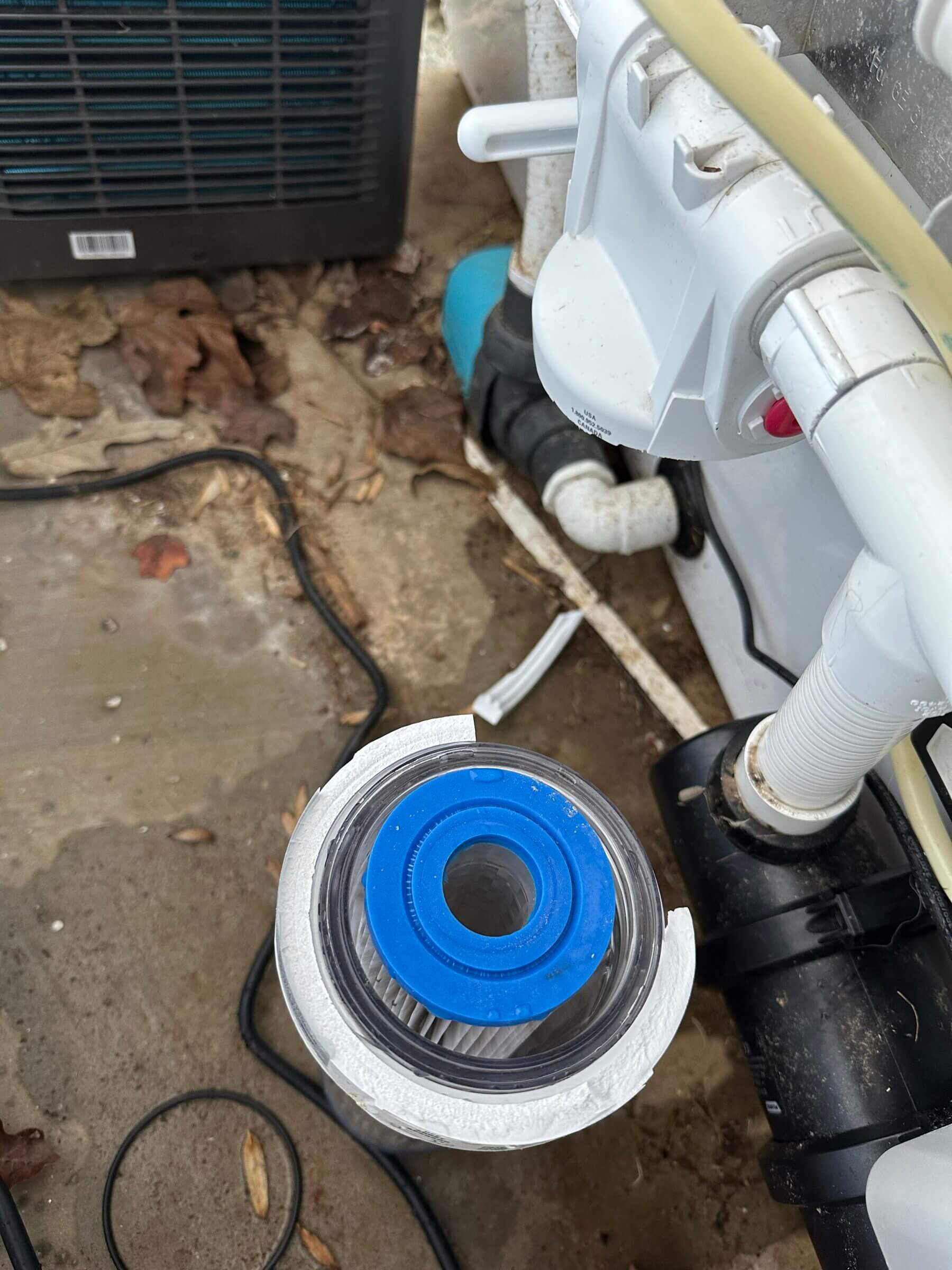
If you’re planning on purchasing a cold plunge (rather than building one), it’s essential to pick a reputable brand that offers good customer support and a decent warranty in case of issues. That’s particularly true if you spend thousands of dollars on a high-end tub with a chiller and water filtration capabilities.
The problem is that cold plunging didn’t gain popularity until a few years ago, so most brands don’t have a decades-long history you can rely on. Most of the high-end brands I recommend in my “best cold plunge tubs” article — including Plunge, Morozko Forge, Ice Barrel and TheraFrost — have been around for a few years and offer a 12-month warranty with an option to purchase extended coverage.
I’ve owned many of the plunges mentioned in that article for several years, and have had very few issues with them. Customer support has been excellent when I had a problem (e.g., when the water inside the filter housing froze, causing it to crack because I forgot to drain it while I was on winter vacation).
If you buy a plunge on Amazon, or from a little known company that isn’t well reviewed, I wouldn’t expect that level of service.
#11. Safety Features

If done incorrectly, cold plunging can be dangerous. For example, if you forget to unplug the chest freezer you converted into an ice bath before jumping in, you risk getting electrocuted.
While it’s less likely to happen, the same risk applies to commercially available tubs that come with a chiller. That’s why some of the chillers I’ve tested feature a dedicated ground fault circuit interrupter switch (GFCI) that cuts power to the chiller in the event of an electrical problem that could harm you.
Aside from the risk of electrocution, there is also a risk of slipping when getting in or out of the tub, especially if you’re overly excited or in a hurry. That’s why I recommend getting a non-slip pad you can place in front of the tub to assist in getting in and out with wet feet.
Some barrel-shaped tubs come with step stools to make entering and exiting the tub easier.
Regardless of any integrated safety features, I recommend having another adult nearby when you plunge to get help if needed. I once plunged while alone at home after a grueling sauna session and got light-headed when my body hit the icy water. Fortunately, everything went well, but imagine what could have happened if I passed out. So be smart.
#12. Shipping
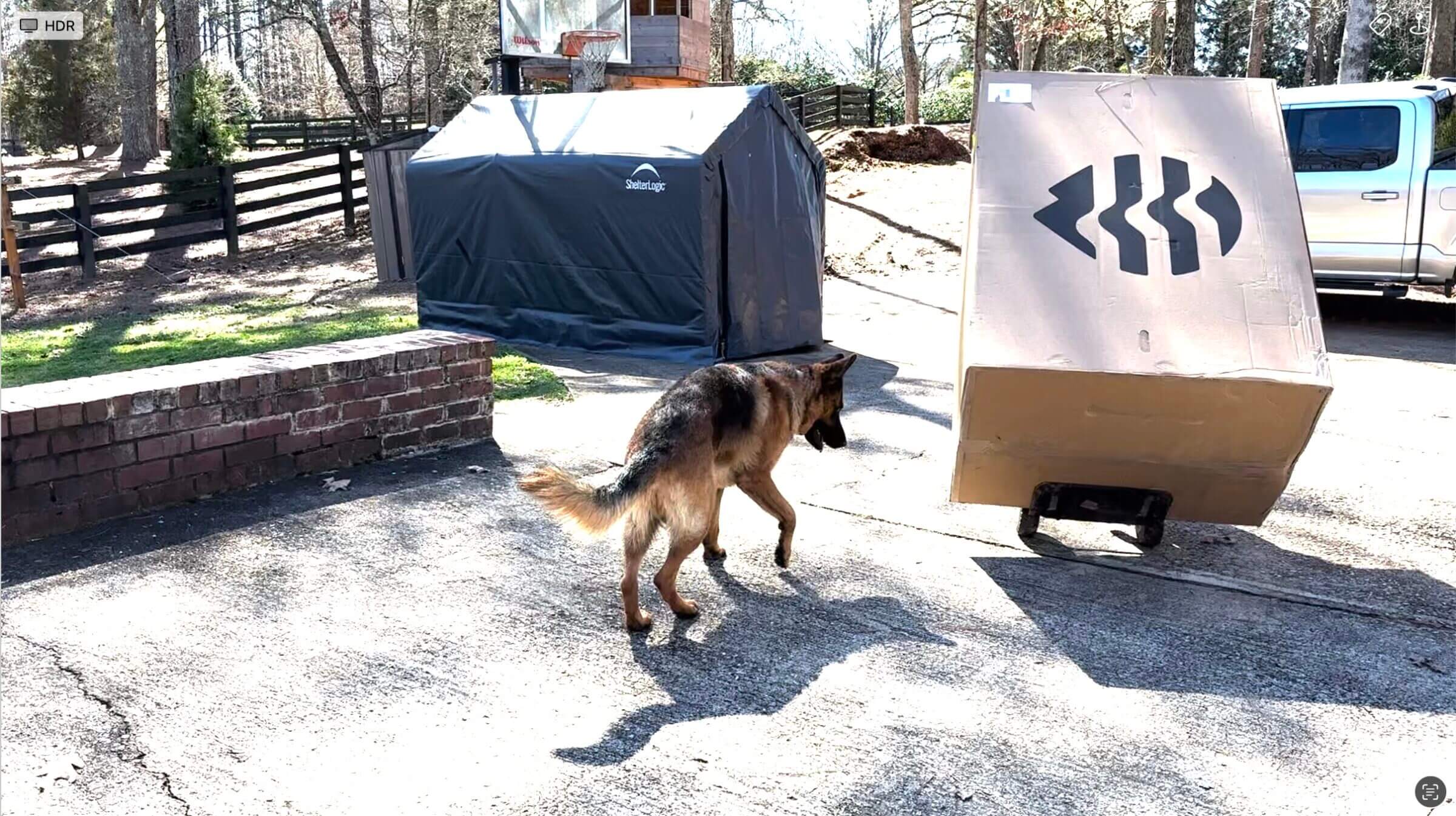
Some cold plunge tubs are heavy and bulky, making shipping expensive. While some brands offer free shipping, make sure to take potential shipping fees into account when comparing different products.
Additionally, some brands (like Plunge) offer white-glove delivery. That means the delivery driver will bring your cold plunge tub to the exact location you want, instead of dropping it off at the curb or the end of your driveway.
Most companies offer only curbside delivery, which means it’s up to you to recruit the muscle for moving your new plunge to your backyard (or wherever you want it to be).
The driver who delivered my Plunge also removed all the packaging material, so I didn’t have to fill up our trash can.
Those are major convenience factors you should take into account.
Closing Thoughts on Choosing a Cold Plunge
The cold plunge market has exploded in recent years, and picking a tub that meets your needs can be an overwhelming process.
I hope that the factors presented in this article help you make the right purchase (or build) decision. Additionally, I encourage you to read my “best cold plunge tubs” article to get recommendations for products I have used (you can also watch the video version on YouTube).
While you ruminate on what tub might be best for you, you can start reaping some of the benefits of ice bathing by taking cold showers!
Now I’d like to hear from you: what are the most essential features of a cold plunge tub, and which one did you buy (or build)? Let me know in the comments below.

Michael Kummer is a healthy living enthusiast and CrossFit athlete whose goal is to help people achieve optimal health by bridging the gap between ancestral living and the demands of modern society.
Medical Disclaimer
The information shared on this blog is for educational purposes only, is not a substitute for the advice of medical doctors or registered dieticians (which we are not) and should not be used to prevent, diagnose, or treat any condition. Consult with a physician before starting a fitness regimen, adding supplements to your diet, or making other changes that may affect your medications, treatment plan or overall health. MichaelKummer.com and its owner MK Media Group, LLC are not liable for how you use and implement the information shared here, which is based on the opinions of the authors formed after engaging in personal use and research. We recommend products, services, or programs and are sometimes compensated for doing so as affiliates. Please read our Terms and Conditions for further information, including our privacy policy.